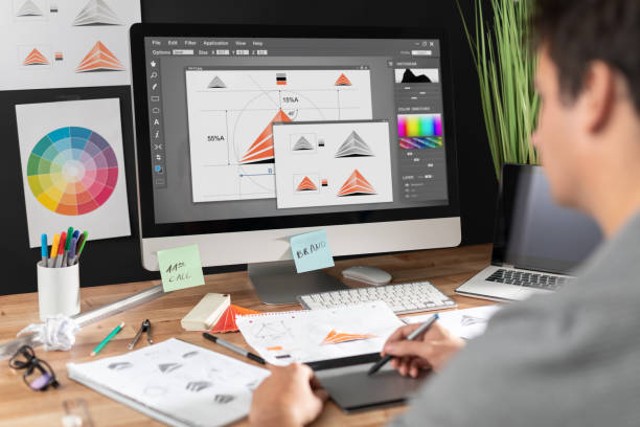Let’s be real – designing a user interface (UI) that’s both visually appealing and super functional isn’t easy. There are so many things that can go wrong. So, it’s important to avoid those user interface design mistakes if you want your users to have a great experience.
In this post, we’ll look into the most common User interface design mistakes and give you some tips on how to steer clear of them. Even if you’re a seasoned designer or just starting, pay attention. These insights could make all the difference in creating a UI that users will love.
READ ALSO: Top 11 Principles of UI Design Every Designer Needs To Know
Common User Interface Design Mistakes and How To Avoid Them
1. Unclear Navigation
One of the biggest User interface design mistakes is having a navigation system that’s just plain confusing. Users should be able to find what they need quickly and easily, without getting lost in a maze of menus and buttons.
The fix? Keep your navigation clean and intuitive. Group related items together. Use clear and concise labels. Finally, make sure the structure makes sense. Think about the user’s mental model and how they expect to navigate through your interface.
Also, don’t forget about accessibility – make sure your navigation is easy to use for folks with disabilities too.
2. Inconsistent Design
Consistency is key when it comes to UI design. If your interface is all over the place, with different styles, layouts, and interactions, it’s going to be a nightmare for users to figure out.
To avoid this, establish a solid design system and stick to it. Use a consistent color palette, typography, iconography, and layout throughout your interface. This will create a cohesive and intuitive experience for your users.
Remember, consistency doesn’t mean everything has to look the same. You can still have some variety and personality, but make sure it all fits together seamlessly.
READ ALSO: The Future of UI Design: Emerging Trends and Technologies
3. Cluttered Layouts
Ah, the dreaded cluttered layout. When you cram too much stuff into a UI, it can quickly become overwhelming and confusing for users. They’ll have a hard time focusing on what’s important and may end up feeling stressed and frustrated.
Keep your layouts clean and organized. Use whitespace effectively, group related elements together, and make sure there’s a clear hierarchy of information. Prioritize the most important content and features, and don’t be afraid to cut out anything unnecessary.
Remember, less is often more when it comes to UI design. Your users will thank you for a streamlined and uncluttered interface.
4. Unintuitive Interactions
If your users can’t figure out how to interact with your interface, you’ve got a major problem on your hands. Unintuitive interactions can be a real pain, leading to confusion, frustration, and a poor overall user experience.
To avoid this, focus on creating interactions that feel natural and intuitive. Use familiar UI patterns and conventions, and make sure the behavior of your interface is consistent and predictable.
Pay close attention to things like button placement, form fields, and gesture-based interactions. Test your designs with real users to see how they interact with your interface, and make adjustments based on their feedback.
READ ALSO: Top 15 Skills to Be Skillful In UX Design
5. Poor Accessibility
Accessibility is crucial when it comes to UI design, but it’s often overlooked. If your interface isn’t accessible to users with disabilities, you’re excluding a significant portion of your audience.
Make sure your designs are accessible to users with visual, auditory, motor, or cognitive impairments. This includes things like providing alt text for images, making sure your interface is keyboard-accessible, and ensuring that your color choices have sufficient contrast.
Consult accessibility guidelines and standards, and test your designs with users who have disabilities. Investing in accessibility upfront will pay off big time in the long run.
6. Lack of Responsiveness
With the rise of mobile devices, it’s more important than ever to ensure your UI is responsive and optimized for different screen sizes and devices.
If your interface doesn’t adapt well to different viewports, users are going to have a frustrating experience. They might have to squint and scroll endlessly to find what they need, or they might just give up and go elsewhere.
Design your UI to be responsive from the start. Use flexible grids, fluid layouts, and responsive typography to create an interface that looks great and functions well on everything from desktop to mobile.
Test your designs on a variety of devices and screen sizes, and make adjustments as needed. A responsive UI will go a long way in providing a great user experience.
READ ALSO: Top 15 Skills to Be Skillful In UX Design
7. Neglecting Feedback and Error Handling
User interactions don’t always go as planned, and when things go wrong, it’s crucial to provide clear and helpful feedback.
If your UI doesn’t handle errors and exceptions gracefully, users are going to feel lost and frustrated. They need to know what’s happening, why it’s happening, and what they can do about it.
Make sure your interface provides meaningful feedback and error messages. Use clear and concise language, and offer relevant guidance or suggested actions to help users get back on track.
Don’t forget about positive feedback too. When users complete a task or interaction successfully, let them know. This can go a long way in building a sense of accomplishment and confidence.
8. Lack of Personalization
Users love feeling like an interface is tailored to their individual needs and preferences. But if your UI is a one-size-fits-all solution, it’s going to feel impersonal and less engaging.
Look for ways to incorporate personalization into your interface. This could involve things like user-specific content recommendations, customizable settings, and preferences, or even personalized branding and visuals.
The key is to strike a balance between personalization and privacy. Make sure you’re respecting user data and giving them control over their personal information.
9. Poor Information Architecture
Information architecture (IA) is the foundation of a great UI. If your information hierarchy is a mess, it’s going to be a struggle for users to find what they need.
Take the time to carefully plan and organize the content and functionality of your interface. Use a clear and logical structure, with intuitive labeling and categorization.
Consider the user’s mental model and how they’re likely to approach your interface. Test your IA with real users to see how they navigate and find information.
A well-designed information architecture will make your UI more intuitive and user-friendly.
10. Lack of Usability Testing
Finally, one of the biggest mistakes you can make in UI design is neglecting usability testing. Without regularly gathering feedback from real users, you’re flying blind and missing out on crucial insights.
Make usability testing a core part of your design process. Observe users interacting with your interface, gather their feedback, and use those insights to inform your design decisions.
Don’t just test at the end of the project – test early and often. This will help you identify and address issues before they become major problems.
Remember, your users are the experts when it comes to your interface. Listening to their needs and experiences is the key to creating a UI that truly works for them.
READ ALSO: 11 Step-by-Step Guide On How to Be a UX Designer
Conclusion
Whew, that was a lot of User interface design mistakes to cover! But now you’ve got a solid understanding of the common pitfalls to avoid and the strategies to create a user interface that’s both beautiful and highly functional.
Great UI design isn’t just about aesthetics – it’s about creating an intuitive, accessible, and engaging experience for your users. Always keep these tips in mind.







